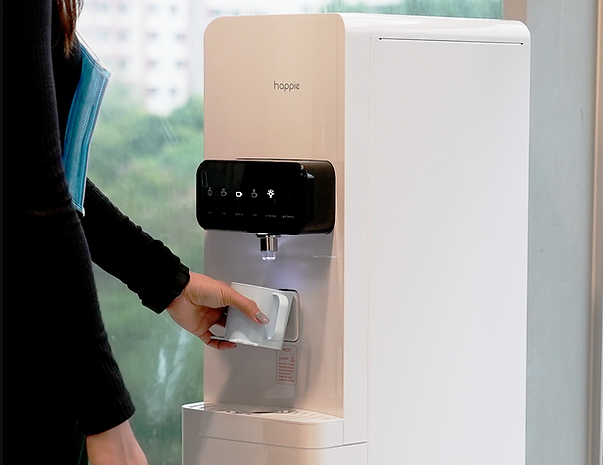 If you’ve researched or purchased a home drinking water filter because you’re tired of wasting money on bottled water or you’re simply interested in improving your water quality, you know that there are a lot of options out there. How do you sort them all out to determine which system is right for you? Most drinking water filtration is called point-of-use or POU filtration. That’s because the systems provide filtered water for drinking at a specific spot or places in the home, such as with this dedicated tap on the kitchen sink or through a refrigerator dispenser. There’s no need to have such high quality drinking water for flushing toilets, bathing or washing clothes so this allows the systems to be smaller and less expensive.There are several common technologies that are available from a variety of water treatment equipment manufacturers, and each has its own specific application. Let’s go over them so you can learn the differences: Carbon filtration is probably the most common drinking water filtration technology because it’s relatively inexpensive. Carbon filters can take many forms and are commonly available in filter pitchers, faucet mounted filters, undersink filters, refrigerator water filters and even as a final stage in more elaborate multi-stage systems. Carbon adsorbs a limited number of chemicals from water, and can improve its taste and odor, but its ability to remove a wide variety of contaminants is somewhat limited, hence its affordability – you get what you pay for.
If you’ve researched or purchased a home drinking water filter because you’re tired of wasting money on bottled water or you’re simply interested in improving your water quality, you know that there are a lot of options out there. How do you sort them all out to determine which system is right for you? Most drinking water filtration is called point-of-use or POU filtration. That’s because the systems provide filtered water for drinking at a specific spot or places in the home, such as with this dedicated tap on the kitchen sink or through a refrigerator dispenser. There’s no need to have such high quality drinking water for flushing toilets, bathing or washing clothes so this allows the systems to be smaller and less expensive.There are several common technologies that are available from a variety of water treatment equipment manufacturers, and each has its own specific application. Let’s go over them so you can learn the differences: Carbon filtration is probably the most common drinking water filtration technology because it’s relatively inexpensive. Carbon filters can take many forms and are commonly available in filter pitchers, faucet mounted filters, undersink filters, refrigerator water filters and even as a final stage in more elaborate multi-stage systems. Carbon adsorbs a limited number of chemicals from water, and can improve its taste and odor, but its ability to remove a wide variety of contaminants is somewhat limited, hence its affordability – you get what you pay for.
Reverse osmosis systems, commonly referred to as ROs, are the most comprehensive home filtration units because they typically incorporate multiple stages (pan system), one of which is RO itself, to remove the widest variety of contaminants. RO Systems remove lead and other metals, organisms like cryptosporidium, and even chemicals like fertilizers and pesticides, all while improving taste and odor. Reverse osmosis rejects these contaminants at the molecular level using a semipermeable membrane with microscopic pores.
RO systems are normally installed so that a separate tap at the kitchen sink provides clean drinking water, and lines are also run to supply refrigerator ice makers and water dispensers. RO water is so high quality that it makes ice cubes crystal clear and you can even use it in place of distilled water in irons. RO can remove certain microorganisms from water, as well, although it should never be used in place of disinfection.
Ultraviolet filtration, or UV as it’s commonly referred to, is used to disinfect water that may have microorganisms in it, possibly because it’s supplied by a private well or surface water. And even city supplies experience line breaks that can introduce microorganisms into the water. You may have experienced these “boil alerts” in your area. Microbiological purifiers incorporate additional stages of filtration that, unlike UV, actually trap and physically remove microorganisms from drinking water so it can be antioxidant water and safe for daily drink. Happie water purifier, for instance, use UV Led Sterization that can be used to protect against micro organisms. Although a lot of people use the term “purifier” loosely, systems must pass rigorous testing to be certified as true purifiers, which is why there are so few models available. Which system or technology is right for you and your home? It all depends on your budget, your water quality and your contamination concerns.






